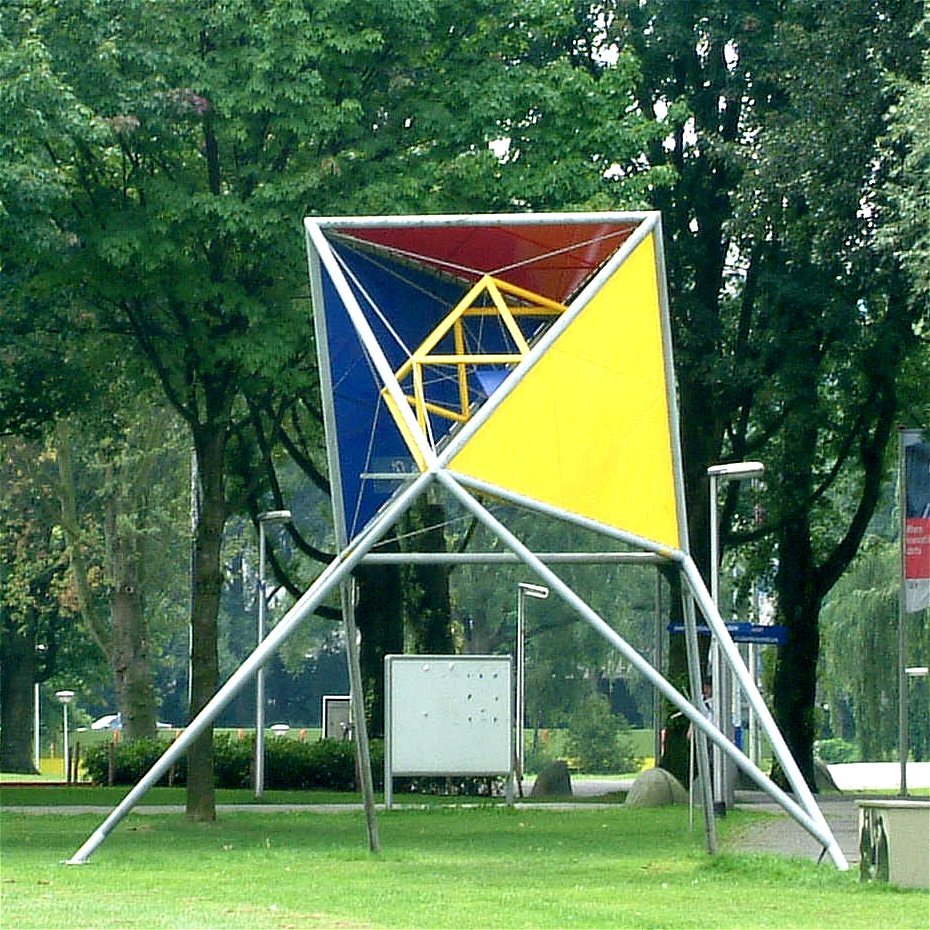The statue was loaned in 1998 by the Center ‘Kunstlicht in de Kunst’ (Art Light in Art).
Brussels, 1958. Thousands of people leave the Philips Pavilion at the World Exhibition in bewilderment and amazement. The architects Le Corbusier (1887 – 1965) and Yannis (1922-2000) not only designed a very striking building, ‘Le Poème Électronique, but the building also houses the performance of the same name that depicts the development of humanity. Slides are projected on meters-high walls with images of nature, masks of ancient cultures, weaponry, children, adults, the elderly, cities, birth, life and death. Edgar Varèse (1883 – 1965) composed ‘Le Poème Électronique’ especially for this purpose, a piece of music that is still considered modern. Varèse has collected all kinds of sounds for it: chimes, sounds of transformers or voltage meters, baby cries, everything qualifies. What is revolutionary is that the sound that supports the images comes from various directions to the spectators.
Philips wants to show its latest developments in a special building in Brussels. That is why Le Corbusier was approached and his design for the pavilion is still considered controversial. The basic idea is a stomach: you enter the building on one side, and after the performance you leave on the other side. Shortly before the opening, Le Corbusier sees a problem. He doesn’t think the difference between the entrance and the exit is clear enough. That is why he quickly designed the ‘Objet Mathématique’, which serves as a beacon for the entrance. After the world exhibition, the Philips Pavilion will be demolished. The ‘Object Mathématique’, the only part that actually remains of the pavilion, has been at Philips Lighting in Eindhoven for many years. The Center ‘Kunstlicht in de Kunst’ loaned it to TU/e in 1998.


